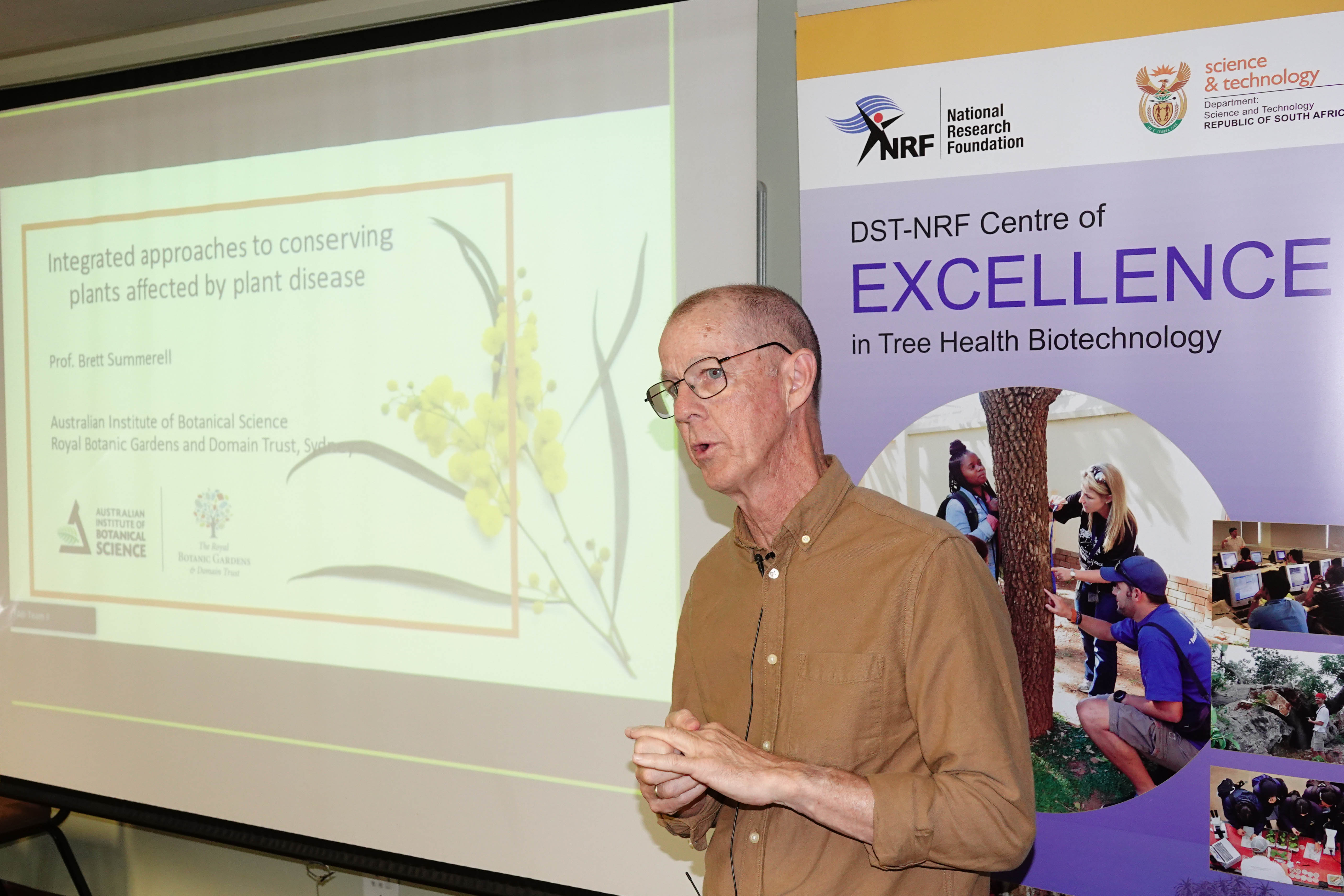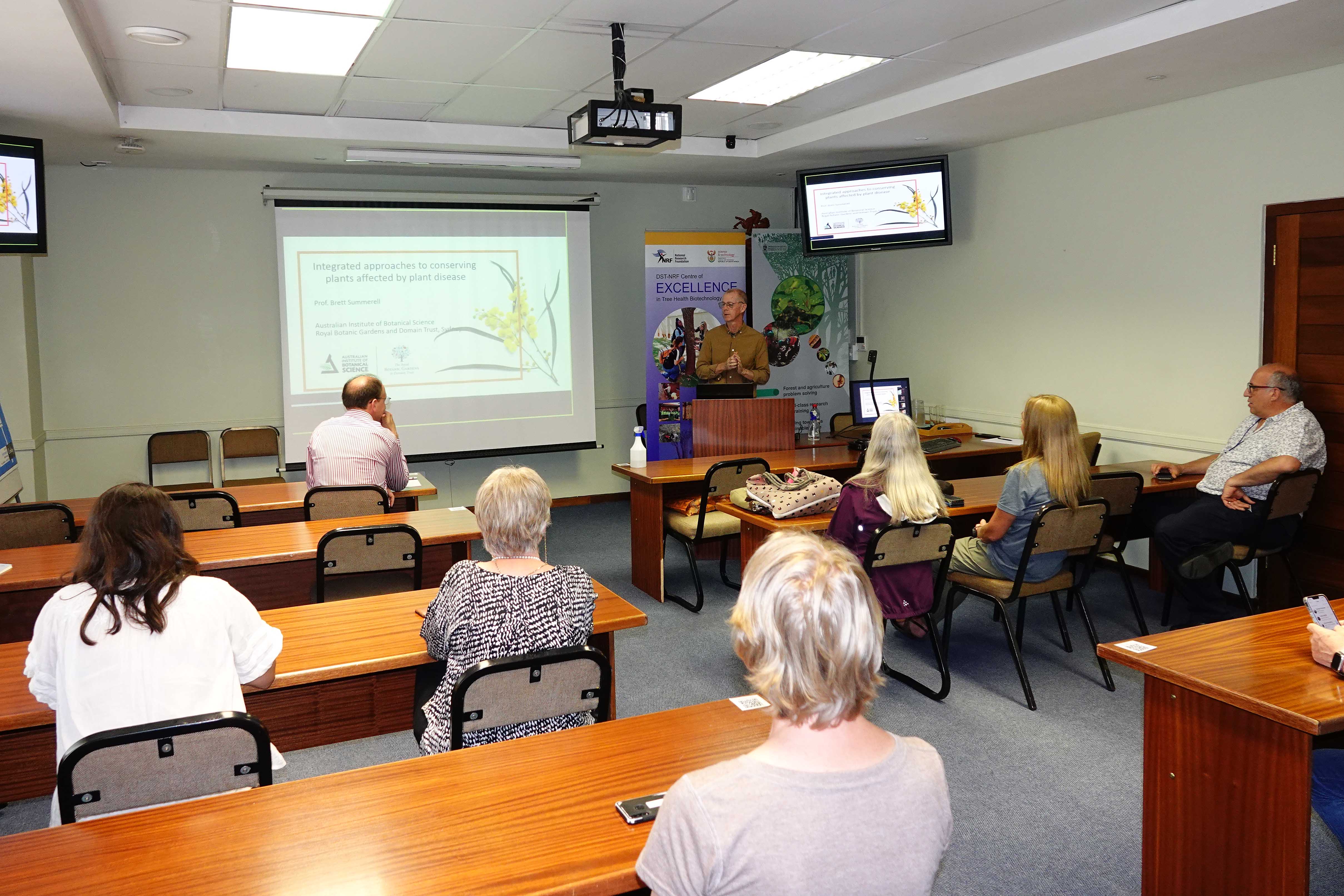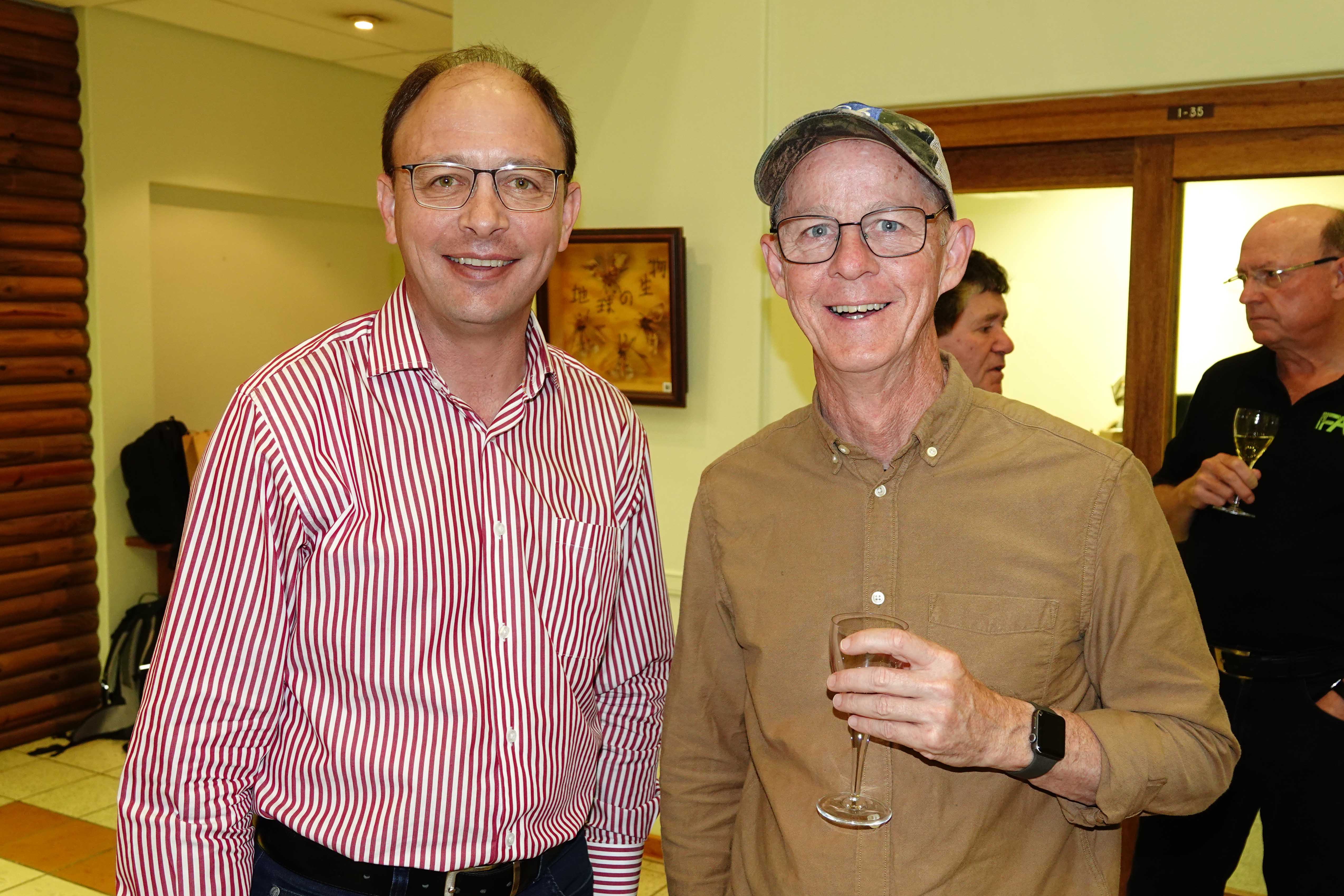Brett Summerell presents a FABI special seminar 2022-11-04
FABI hosted a special seminar on 28 October by longtime friend and collaborator of the Institute, Dr Brett Summerell, Chief Scientist and Director of Research at the Royal Botanic Garden Sydney. Brett was visiting the Institute after participating in a FABI/SANBI biosecurity best practice workshop, supported by the International Plant Sentinel Network, at Kirstenbosch National Botanical Garden in Cape Town.
His presentation, “An integrated approach to protecting and conserving plants against the impact of invasive diseases in Australia” cited three prominent examples of how scientists were trying to save indigenous flora from the devastating impact of invasive diseases. This includes the use of genetics and genomics to manage collections, and genomic screening as a conservation tool, to ensure genetically diverse populations are maintained in these collections.
Australia has some 25,000 species of plants, 85% of which are endemic. Amongst the greatest challenges these species face is the devastating impact of exotic pests and diseases, as well as climate change. Despite Australia’s very strict phytosanitary regulations, some pests and pathogens do still get introduced, often with devastating consequences.
The discovery of the Wollemi Pine (Wollemia nobilis) in a remote gorge in the greater Blue Mountains area in December 1994, was the botanical equivalent of finding a living dinosaur. Less that 100 adult trees are known to exist in the wild and, despite strict measures to restrict unauthorized access to this site, the devastating plant pathogen Phytophthora multivora was introduced into the gorge, being detected in 2004 when dying Wollemi pines were noted. A concerted effort was made to collect and propagate seed from every individual tree, with these seedlings being planted back in the wild to increase the number of these trees. But this programme was dealt a harsh blow when the “Black Summer Bushfire” of 2020 wiped out almost all of the planted seedlings, while also damaging many of the established trees. This has seen a redoubling of restoration efforts.
Bunya Pine dieback, caused by Phytophthora multivora, is a “worrying” disease devasting Bunya Pine (Araucaria bidwillii) populations in one of the two locales where it is found in Australia. This culturally important species provided a very important food source for Aboriginal Australians. Diverse tribes once travelled great distances for “Bunya gatherings” where they would meet to discuss important issues, and harvest and feast on the nutritious nuts. Sadly, now trees as old as 500-800 years old are dying.
The third introduced pathogen discussed was Myrtle rust (Austropuccinia psidii) that is devastating Myrtaceae in Australia. It attacks new flushes of growth, flowers and fruiting structures. This has been especially problematic after the devastating bushfires of 2020, as it greatly reduces the ability of these species to propagate after fire devastated most of these natural populations. This rust invasion has spread like a proverbial wildfire and, only 12 years after its introduction, has already pushed 16 species to the brink of extinction.
Click here to watch an excellent video about the threat myrtle rust poses to Australia's biodiversity.




